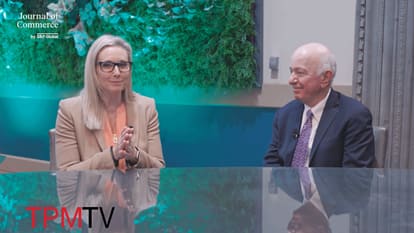- Program
- What's New
- Speakers
- Who's Attending
- TPM Community
- Partners

TPM Partnership
Partnership places your company in a position of authority and enables you to build and strengthen your relationships, visibility and reputation with major shippers
LEARN MORE - Media

TPM TV
Episodes of exclusive TPM content featuring interviews of key stakeholders and attendees.
WATCH NOW - About

About TPM
The must-attend conference for the trans-Pacific and global container shipping and logistics community
LEARN ABOUT TPM - Get Updates
- FAQ's
Sessions With William B. Cassidy
Tuesday, 5 March
-
02:15pm - 03:00pm (PST) / 05/mar/2024 10:15 pm - 05/mar/2024 11:00 pm
Is LTL the Future of Transload?
For decades, less-than-truckload carriers operated far downstream from seaports, but that’s changed dramatically in the past few years. LTL carriers are opening major cross-dock terminals near ports and transloading containerized freight for importers seeking more transportation options. Part of the LTL carrier’s strategy is to bring freight into their networks earlier than ever and capture a larger share of their customers’ business. Carriers specializing in cross-docking and small shipments also are capitalizing on increased transloading demand from shippers. This panel will examine the portside operations of LTL companies and how shippers are using LTL in their inland distribution networks.
- Speakers:
- Ken Kellaway
- Chris Sikora
- Ed Smith
- William B. Cassidy
-
04:20pm - 05:05pm (PST) / 06/mar/2024 12:20 am - 06/mar/2024 01:05 am
Crossing the Border: Untying the Knots in US-Mexico Trade
As pressure builds on US-Mexico supply chains, importers and exporters must rethink strategies and tactics used to move freight through a fixed number of border crossings, often with little wiggle room. Major crossing points such as Laredo and El Paso can become chokepoints when even small changes such as additional truck safety inspections or a shift in personnel from customs to immigration enforcement take place. This session, the second of two focusing on the north-south trade, will dig into the factors making the US-Mexican border the hottest location in US transportation in 2024. In the process, it will answer the following questions:
• What are some of the best practices that shippers and their logistics and transportation partners are developing to avoid pratfalls that can delay shipment across the border?
• Are there new opportunities to move more freight by intermodal rail, or do the advantages of trucking still dictate how freight will move as US-Mexico trade grows?
• Is the impact of nearshoring becoming clearer as direct foreign investment in Mexico increases?
• Is the actual infrastructure — bridges, inspection lanes, customs personnel — at the border sufficient to handle increased trade?
• How is migration and immigration impacting decisions?

